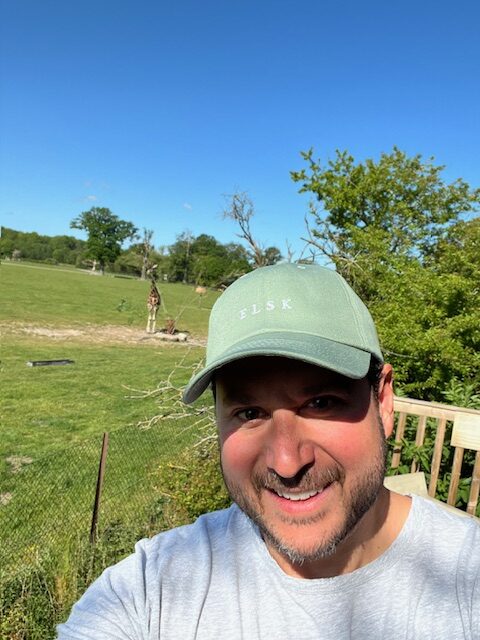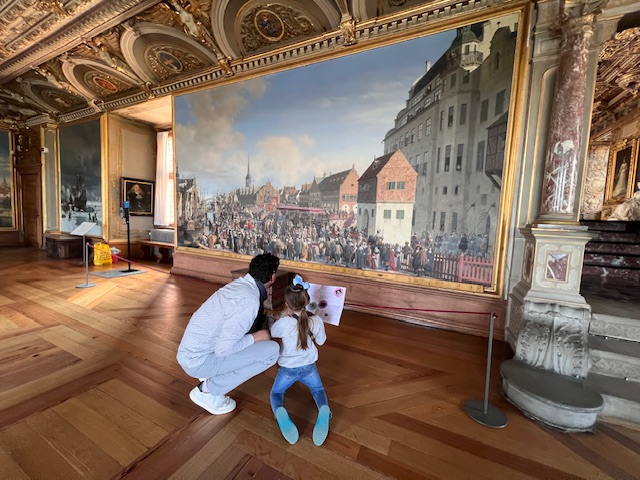CLICK HERE to sign up for our Newsletter!
call us 713-405-1193
call us 713-405-1193
Blog
Dining in London
When I was growing up, I feel like people constantly told me that London had terrible food. I wonder if that was true or if my friends were just on a perpetual hunt for chicken fingers and hamburgers. Whatever the case, as an adult, I have found that the food in London is outstanding. Here’s where we took Josephine for dinner on this last trip (we do so much sightseeing on an average day in London that lunch is sort of nondescript):
- Colonel Saab -– Jamil and I are suckers for Indian food in general, and Indian food with cocktails?? We’re sold. Initially, my heart was set on Gymkhana, but they’re closed on the 26th of December, so we did some research and found Colonel Saab. I’m so glad we did because Jamil talked about it for days. If you go to Colonel Saab, I recommend spreading your order around the menu.
- The Ivy — This is a known classic throughout London. There are several locations and concepts. I have only tried the original one (referred to as Ivy West) because it’s open late, well past the close of theatrical performances. This is where Jamil gets his fish and chips fix. It’s perhaps a bit more expensive than fish and chips at a dive pub, but the dish is an absolute winner every time. I’ve tried many things on the menu and have never been disappointed. Plus, their martinis are excellent enough to make the meal fabulous on their own.
- Claude Bosi’s Oyster Bar at Bibendum — A friend we know through Josephine’s school recommended this restaurant, and the moment he did, I knew what it was. We’ve driven past its lively, sparkly exterior in Belgravia many times, and I’ve always wanted to remember the name, so we could go on our next London trip. Alas, I have forgotten on each occasion! Bibendum is housed in the original Michelin building, where they actually repaired cars and likely came up with the brilliant idea of giving people reviews of restaurants worth driving for. It’s spectacularly tiled and decorated, and the front of the establishment houses a small, vibrant flower shop. I was so excited to try! There are two restaurants here: upstairs is the Michelin-starred Bibendum, and downstairs is the lively oyster bar. Originally, we made reservations upstairs because our friend said it was too good to miss, but in the end, I couldn’t justify taking Josephine to a £250 fixed price menu that I knew she’d despise from start to finish. Who wants to be abused for choosing a gourmet meal? Anyway, we went downstairs, and it was great. We had the best mussels I can remember eating — so much cleaner and fresher than most we encounter in the US — and Josephine’s spaghetti with clams was fantastic. I highly recommend this place, whether you go up or down!

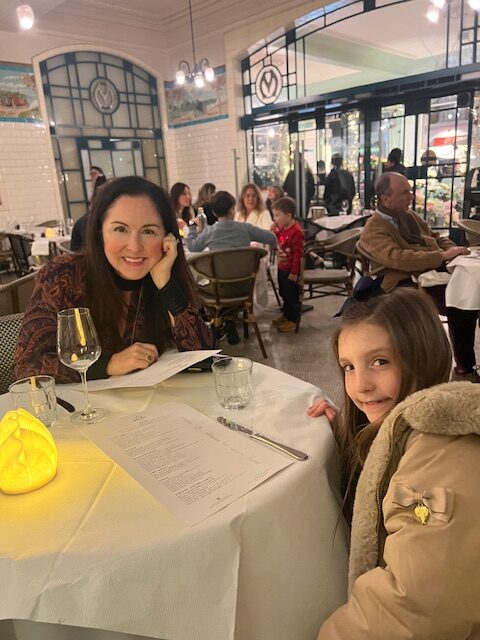



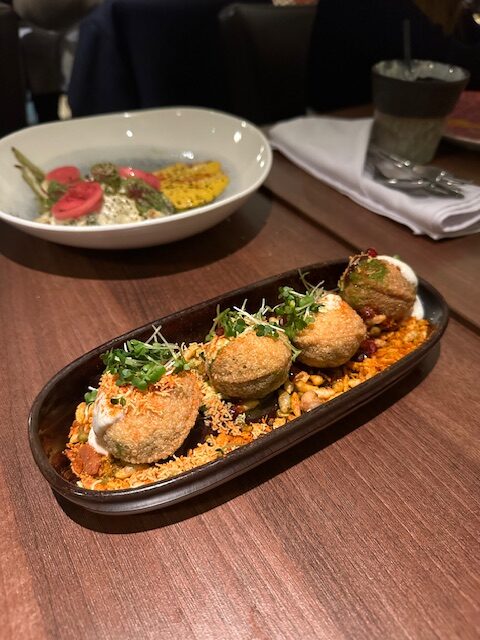
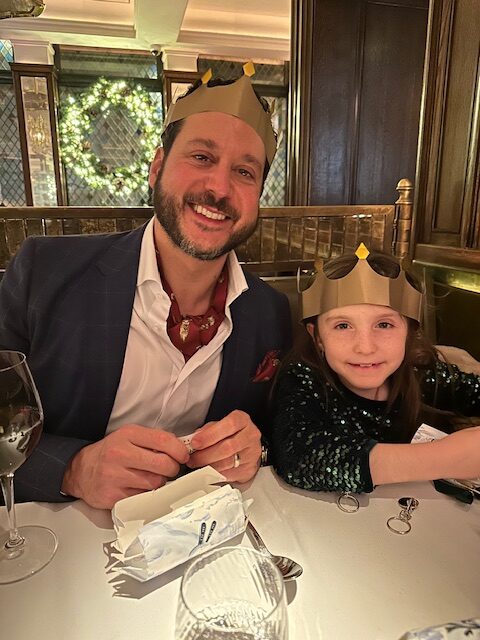
Two Phenomenal London Shows
We’ve come to London in the wintertime several times because of the city’s festivity and pomp during the Christmas season. Shops are beautifully decorated with trees and ornaments and garlands, hotels offer special Christmas teas, and the streets of Piccadilly glisten with lighted angels mounted overhead. Essentially, it feels like Christmas in a way that Texas never quite does.
This year, we only spent three nights in London, thinking we’d just been there last summer. Did we really need another prolonged stay in the city? As it turned out, yes, because it was just as addictively fantastic as ever. But that aside, we maximized our time, taking this opportunity to pack in some London shows.
First, we went to a panto (short for pantomime, with no pantomiming as we know it). If you go to London over the holidays, with or without a child, you absolutely must go to a panto. Pantos are bawdy, brilliant stage spectacles that are part of the British holiday tradition. They are wild, and the producers spare no expense. Expect one over-the-top costume after another and shocking special effects, at least at the one put on annually at the Palladium.
This year, we saw Robinhood. Okay, it was nothing like the actual Robinhood. In fact, there’s barely any plot at all. But it was hilarious. And the talent was excellent. Plus, the experience was even better because the crew chose Josephine to go up on stage as part of a sketch. I’m not sure that will ever happen again, but we were so proud! It was thrilling and unforgettable.
Second, we took Josephine to the ABBA Voyage show. She’s loved ABBA her whole life. My mother sang Dancing Queen to Josephine when she was a tiny girl, and we have jammed out to Super Trouper more times than I can count.
The Voyage show is unreal. I thought there were animatronic figures on the stage the whole time. Jamil only informed me after the show that it had all been CGI. I could not believe it. And I’m now certain that The Rolling Stones will perform long after their deaths. It is like going to an actual show, but you’re clapping for no one (minus the human backup band, who are also great). Furthermore, it’s so visually stimulating. They take advantage of the giant theatre to set up a huge light show and use the massive walls for a spectacular video production. I really can’t recommend it enough. It’s genius. And I have a feeling it’ll be the first of many such shows. Maybe this technology will let me see a Beatles show after all.


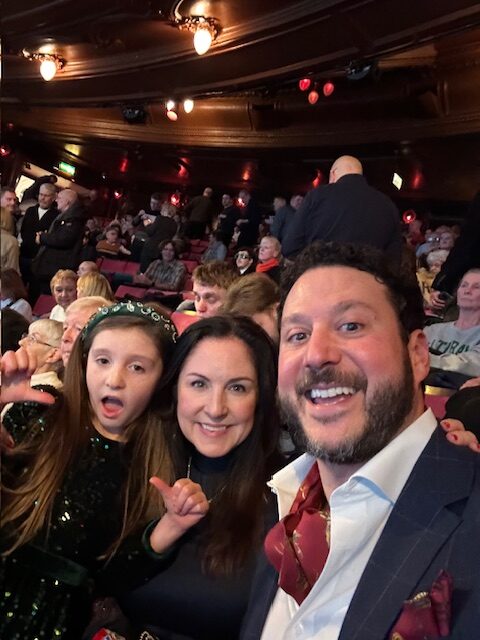






Making Memories in DC
In the pre-Internet, pre-Zoom days, my dad traveled almost weekly for work. He visited Washington, DC, a minimum of 12 times a year, so he could appear at the Court of International Trade. My mom and I traveled with him whenever my school schedule and her theatre performances would allow.
Some of my favorite childhood memories are of making the long bike ride from DC to Mount Vernon, picking strawberries in Virginia farms, and wandering various Smithsonian museums. It always seemed like DC overflowed with activity and wonder, and my experiences as an adult have only reinforced that perspective. Jamil and I have visited with friends and on our own. We’ve gone to fabulous parties in DC and met fascinating people. Every time we visit, it’s something new.
This year, when I was trying to plan a trip for us to take with my dad to resume our annual vacations, I had some pretty inflexible specifications. Since my dad ruptured his quadriceps tendon last year, he’s had a hard time walking; it got even worse when he got stuck in the elevator at his senior living community and tore one of the repair cords as he jumped out and landed with improper assistance. So, I had to find a destination that had a decent number of low-impact, minimal-mobility activities. I also wanted a place that went all out with Christmas decorations but didn’t have a ton of ice and snow on the ground. Finally, I wanted a place with great restaurants and nightlife that was a nonstop flight away. DC fit all the requirements — and going there with my dad would give Josephine the lifelong recollection of seeing her nation’s capital for the first time with him.
Here are the things I made sure to line up in advance:
- Hotel reservations at the Willard.
The Willard is deeply entrenched in American history. It’s where representatives from most of the states came together in April 1861 for a last-ditch attempt at peacemaking before the outbreak of the Civil War, and where General Pershing declared the creation of the military reserve forces. It’s also where the term “lobbyist” came into existence: interested parties would post up in the lobby at the Willard, waiting for Congressmen to stop in for drinks and a cigar, so they could get a word in to promote some cause or another. Of course, many other events took place there..
The lobby at the Willard still bustles with excitement, and the Christmas decorations are over the top. Sadly, however, the rooms aren’t as well maintained as I would like (yes, I am particular). But I can’t really complain because when I informed the hotel manager of the issues with our room, he upgraded us to the Presidential Suite (named after the original Mr. Willard), and that was lovely. It wasn’t an Asian hotel, but it was really nice.
Even with the issues, I think I would stay there again (if my goal was to see monuments and museums) because the location was unbeatable. We literally walked across the street to the Washington Monument and the White House, and within a few blocks, we were at fantastic restaurants in Penn Quarter. Plus, you really feel immersed in the Capital scene, which is magnificent.
- Golf cart tour of the monuments with WeVenture.
A good friend told us about golf cart tours in DC, and I am SO glad we listened to him. We did about 3 hours with a guide named Reggie, who was absolutely wonderful. He knew SO much history, and gave us all kinds of insights — about the development of DC as a city, about important historical figures, some of whom we’d never heard of before, and the monuments themselves.
For instance, did you know that the original city planner, L’Enfant, abandoned his work in Washington because he wanted greater control over the development of the city, thinking the Founding Fathers would beg for his return? They might have, if his assistant planner, an African American named Benjamin Banniker hadn’t possessed a photographic memory. Banniker redrew the plans and took over the remaining work on the city.
Also, did you know that the statue of Thomas Jefferson in the Jefferson Memorial was originally made of clay painted to look like iron because the building was completed during World War II, when all available iron was being used for the war effort? They didn’t get a cast iron statue until well after the war ended!
Oh, and did you know that if you show up at 8:45 in front of the Washington Monument, you can get day-of tickets to travel to the top of the obelisk and see the mall from that inimitable vantage point?
I am telling you, the hits literally kept on coming. It was so worthwhile. And we even did it on a 35-degree day in the rain. Ask for Reggie. He’s incredible.
- Tickets to see A Christmas Carol at Ford’s Theater.
Many will remember that Lincoln was assassinated at Ford’s Theater while watching Our American Cousin. Today, the box where Booth snuck in to commit the most reviled murder in our country’s history is still cordoned off, but you can see performances at the theater.
Each year, Ford’s Theater takes great pride in its production of A Christmas Carol, and Washington in the winter has such an old-world feel that it felt perfect to see something Dickensian. I planned for us to go to the 7:30 showing and then have dinner at Rasika afterwards. Rasika is an innovative, crisp, modern Indian restaurant that stays open late, and I knew Josephine and my dad would love it.
And love Rasika they did! But we’ll have to see A Christmas Carol another year! Around 2:30PM, I checked whether I needed to download tickets for the show. It was then that I learned I had made a terrible mistake. I bought tickets for the 2:00PM matinee, not the 7:30PM evening show! What a bone head. So yeah, we missed the show.
But we still had great Indian food!
- Dinner reservations at Filomena.
Filomena is a culinary institution in DC. It’s located in Georgetown, and it is one of the most festive, fun restaurants in the US. The decorations for Christmas are astonishing, they go SO overboard. You totally should come at this time of year for the visual experience alone!
The food comes in gigantic quantities. We got two appetizers and three main courses for the table, and it was way more than we could eat, so don’t order too much! Besides, you’ll want to leave room for dessert because their desserts are all made in-house and are over-the-top delicious.
If you’re coming to Filomena, be sure to make a reservation!!! This place is packed to the gills!
So those were the big plans (and clearly the show fell through). Everything else, we really played by ear, but you did need tickets for some museums (even though the tickets were free).
Here’s where we visited:
- Library of Congress (needed tickets): It’s so beautiful. You should go even if you don’t intend to go into the library itself to do any research. But if you do want to enter the research library, it’s only open a few hours out of the day. Look before you schedule because you don’t want to miss it.
- National Archives (needed tickets): This was one of the coolest things to see with my dad. Can you believe that this was his first time visiting the Archives?! He’s been to DC countless times, and yet he never popped over to take a look at the Declaration of Independence, Constitution, or Bill of Rights (not to mention the Magna Carta)! He was mesmerized, especially because they give you such interesting insights into how the documents were written and because the handwriting is literally so perfect. This visit doesn’t have to take long, but it’s so worth it.
- Smithsonian Air & Space Museum (needed tickets): You know, this museum is cool, but it doesn’t thrill me like it does some other people. Our favorite parts were seeing the Wrights’ first flyer and looking at the setups of old passenger planes to see how luxurious they once were — oh, and the old stewardess costumes were also pretty awesome, and so fashionable!
- Museum of American History (no tickets): I could spend all day here. And maybe someday I will. I never get tired of reading about our nation’s history or of hearing about the railroads and Route 66. I love looking at each First Lady’s china and inauguration dress. I watched every single video about life in the White House. We had a couple of hours here, and it simply wasn’t enough (and I’ve been there probably ten times).
- The International Spy Museum (needed tickets — these cost money): This is one of the most astonishing museums ever. It’s right up there with the Louisiana Museum in Denmark, the Soanes Museum in London, and the Lobkowicz Palace in Prague for being a barrel of surprises. There are so many activities and exhibits, it’ll blow your mind. In our group, the ages range from eight to 83, and I can safely say that we were all intrigued. I mean, where else can you see ball point pens that fire arrows or bugging devices from the American Embassy in Moscow? And it goes on and on and on. We were there for so long, but I still felt like I missed a ton. I will be back!
Overall, we had a wonderful time in DC with my dad. He’s a difficult dude to travel with, but this was probably the easiest place to go with him, aside from Watercolor or perhaps a cruise (we’ll see — that’s our next adventure with him, I think).



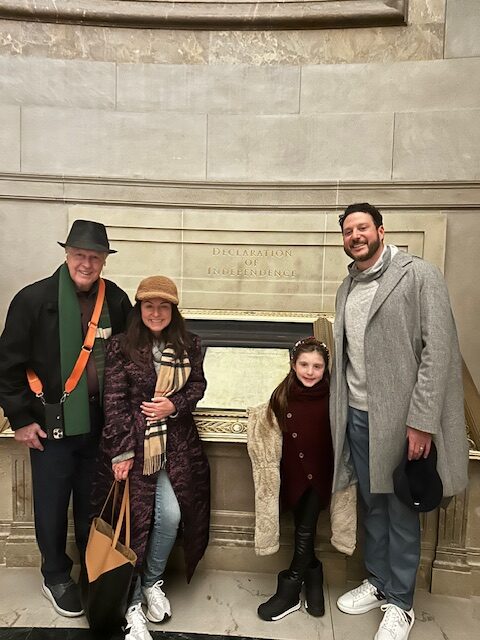







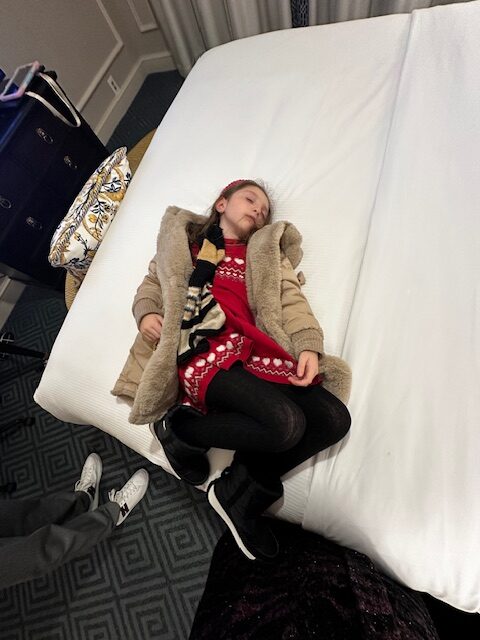
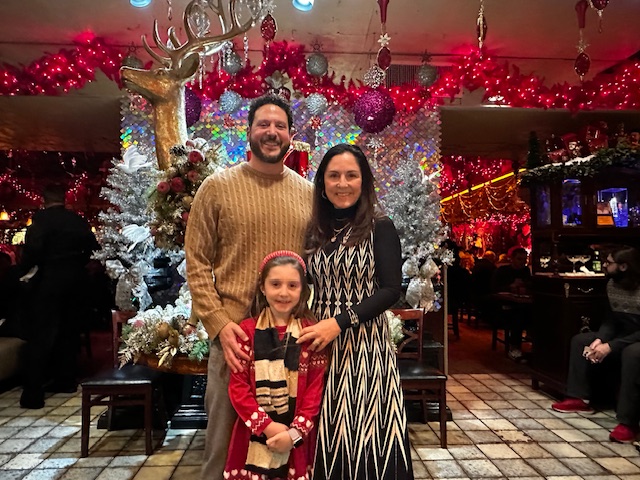

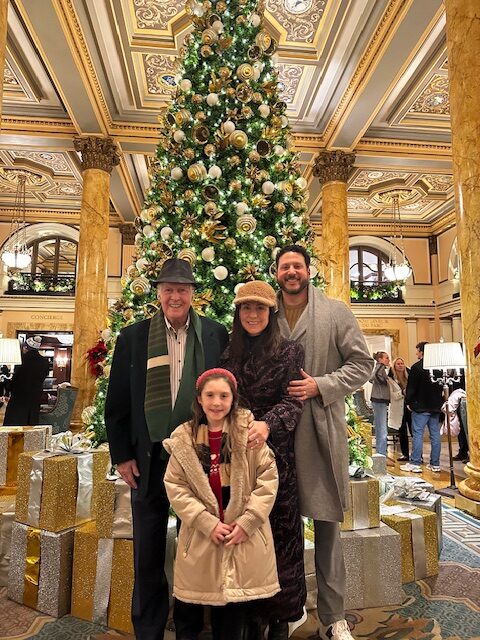
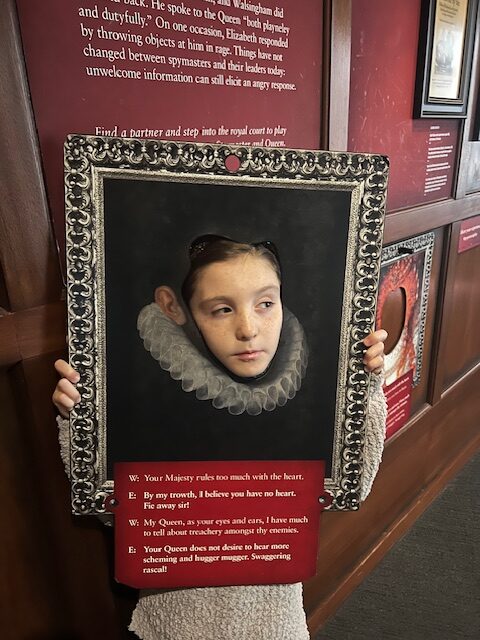

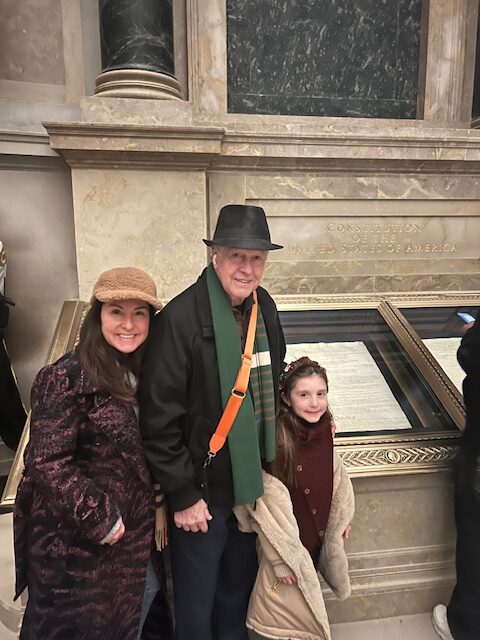



More Adventures in Hanoi
Seeing a Doctor
Our car left Halong Bay for Hanoi at 11:00AM. Jamil was feeling pretty terrible. He’d been dealing with a stomach bug since Cambodia, and it hadn’t run its course in the way we anticipated. He clearly needed to see a doctor. I emailed the Hotel Capella on our way back to Hanoi to ask for a house call; they tried to convince me to take Jamil to a hospital, but I’ve been through enough stomach maladies – from a parasite in Nicaragua to food poisoning in Argentina (twice) to Montezuma’s Revenge in Mexico – to know that a hospital visit was overkill.
The doctor met us at the hotel shortly after we arrived in Hanoi, and he was amazing. He immediately began running tests, and before we knew it, we had a diagnosis of E. Coli and a pile of antibiotics. He said to expect for Jamil to feel well by the next morning, which he did!
In the meantime, I have to give Jamil so much credit for being a champ. Even though his stomach was driving him nuts, he explored the nooks and crannies of Hanoi with us.
Quick aside: Jamil and I are pretty terrible about buying travel insurance. It can be so expensive that it makes more sense to risk losing your deposits and prepayments. And doctors abroad are usually quite inexpensive to see. For example, the house call in Hanoi cost $200 – with a doctor who spoke excellent English and ran thorough tests to diagnose Jamil correctly before treating him. A similar doctor’s visit in the USA would cost over $2,000. I speak from experience. However, you really don’t want to have surgery in a developing nation, and if you get extremely ill, you don’t want to be hospitalized there. Consequently, I recommend buying travel medical insurance with a good medical evacuation policy. We don’t do it when we go to Europe, but we do when we go to El Salvador or Egypt or Cambodia. We have purchased ours through TravelGuard and through American Express. I’m sure there are others. They wind up being a few hundred dollars, a bargain for peace of mind.
Some Custom Clothing!
In 2014, Jamil and I visited Japan and South Korea. On that trip, we discovered the fun of visiting tailors in Asia, where everything is custom and beautiful and insanely inexpensive (in Korea, not Japan, obviously!). We wanted to do something similar on this trip, so we did our research and found a tailor with amazing reviews in Hanoi, called Tailor Bros, tucked away in the old town.
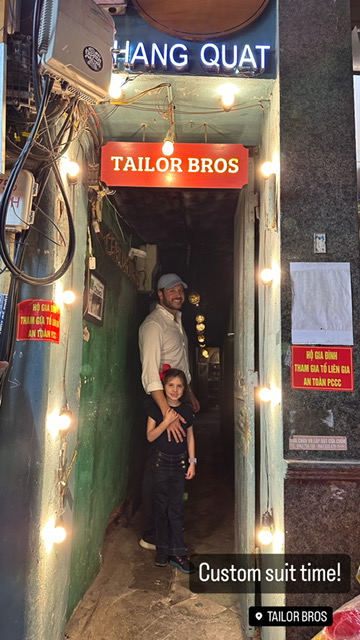
To get to Tailor Bros, you have to navigate a tiny corridor, pass through an adorable coffee shop, and climb a set of vine-covered stairs. Once inside, you meet an efficient, organized, professional tailoring staff that has a wide array of fabrics and the most interesting options for liners I’ve ever seen. We had a blast picking out sport coats and shirts for Jamil, and we also picked up a sport coat and shirt for Michael, my business partner. Our total for three sport coats and four shirts was $1200! And within three weeks, the custom shirts were at our doorstep in Houston. I totally recommend this experience if you’re ever in Vietnam, Taiwan, or South Korea. It’s possible that Thailand would also be a great place to have clothes made. In Bangkok, there’s an entire mall full of independent designers’ shops, more than I’ve seen anywhere else. So, it’s quite likely that the custom clothing game is strong there. I just don’t know for sure! Same goes for China – but I’m not sure how I’d research the potential providers, given the blocks on the Internet in those parts!
How do you research tailors? People who go to custom tailors leave reviews. They use TripAdvisor and Google Maps, for the most part. You can also go ask your hotel, but they usually don’t have personal experience with the tailors. They’ve just been told to recommend those people. You need to hear from someone who’s walked into the shop, looked at the options, gotten the goods, and loved them. You also need to look at the pictures people are posting of their tailoring experiences. If the customers are super cheesed out, they’re probably not the tailors for you.
Marveling at the Outdoor Action in Hanoi!
As soon as you walk out the door in Hanoi, you’re surrounded by activity. People are scooting by on motorcycles – entire families on one motorcycle. People are walking on the streets. People are playing sports in the park. They love badminton! They even play a foot version of badminton, where they wear these weird sock shoes as part of their getup. There are adults playing full games, while their kids practice nearby to become good enough to join the fray. It looks really fun. Of course, we weren’t in any position to do anything but watch…It’s not like we’d ever even seen the game before.
Just past the foot badminton business, there might be an outdoor speaker set up. People of all ages might be dancing to Donna Summer. In America, it’s rather uncommon to see people letting loose in such a public setting without any real reason to do so; they save those “be real” moments for the home. But it seems like people in Hanoi see the city as an extension of their homes. They’re dancing and playing and doing – all in public.
And it’s not only adults! On Saturdays, they block off the streets in the old city and create a safe, outdoor play area for everyone. There are streets lined with tables covered in plain white ceramic pieces and paints. Children pick out what they want to paint and sit at little chairs and tables on the side of the road, painting to their hearts’ content. I didn’t ask if the pieces would get fired, but I presumed they would.
In front of those little painting stands, other kids whiz past on rented remote control cars and hoverboards. Josephine wanted to try them, but I felt a little weird about it. Funny enough, she got in a pretty gangster remote control car in Rabat, Morocco, and I didn’t make a stink about it. I guess covid left me a bit touchier about germs.
Anyway, kids are everywhere these days, playing games on the streets, blowing bubbles, taking pictures. It’s all fun and games, and I can’t recommend it highly enough.
You’ll also find the lake in the center of Hanoi lined with pedestrians, vendors, pets – you name it. It’s so vibrant and exciting. I can’t believe we only got one full day there. We will definitely go again.





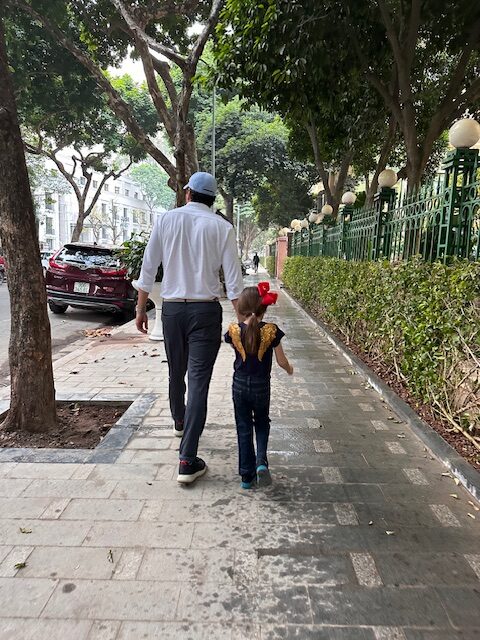








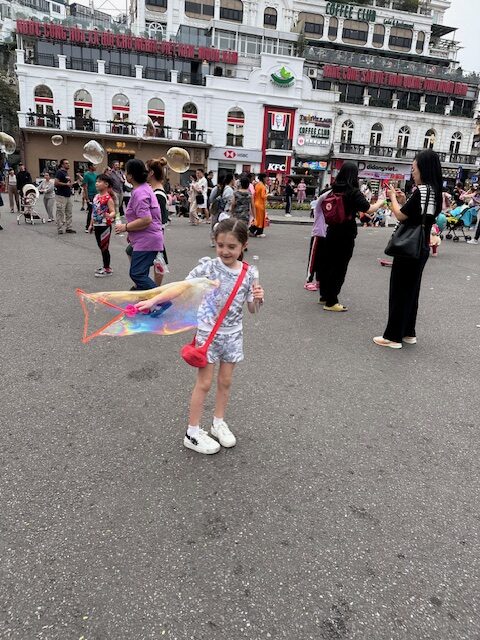
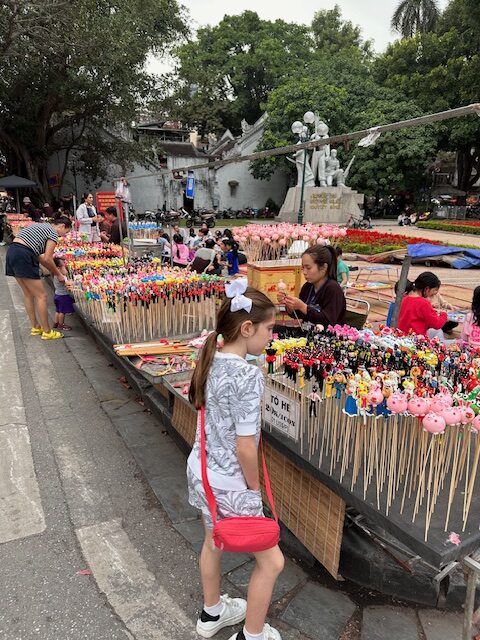
Author: Jessica Givens
Southbound from Copenhagen
As you arrive at the baggage claim in the Copenhagen airport, you’re immediately wowed by large photos and descriptions of unique sites in the Danish countryside. Well, I was wowed, to say the least!
Jamil waited for the luggage, which seemed to take forever, and Josephine wheeled around with gusto on her Micro bag, reveling in her post-flight freedom. I stood in front of one particular tourist advertisement, touting the grandeur of the Forest Tower, a spiral feat of architecture that rose through the woods south of Copenhagen. I was tired, but wow, I was extremely impressed. I was completely convinced that we had to go.
So, after our four nights in Copenhagen, as we drove south to continue our adventure, I insisted that we carve out time to go to the Forest Tower. Thankfully, Jamil is always willing to oblige almost any request to add an unusual crook to our travel path. He punched it in on Google Maps, and away we went.
The Forest Tower was so much cooler than we expected. It is more than a tower in the woods; it’s a recreational park unto itself, called Camp Adventure, which even had an adult ropes course!! Camp Ozark inspired in me a lasting obsession with ropes courses, one I’ve suppressed for decades because I thought ropes courses were confined to children’s camps. Camp Adventure takes ropes courses to the next level! There are actually 11 courses, all at different heights for climbers of different proximities. It looked SO FUN. And I say “looked” because Josephine was too young to do even the children’s course. Besides, I hadn’t figured the time to complete a ropes course into our travel agenda. Next time, though.
This time, we concentrated on the Forest Tower, which has won all kinds of architectural awards for its eco-friendly hourglass design. It feels a little like being in an M.C. Escher drawing because you’re ascending one side of the spiral while others descend above and below you. All the while, the trees grow straight up the center of the structure and remind you that you’re not in a building; you’re in nature. You just happen to be walking on a manmade scaffold through that nature.
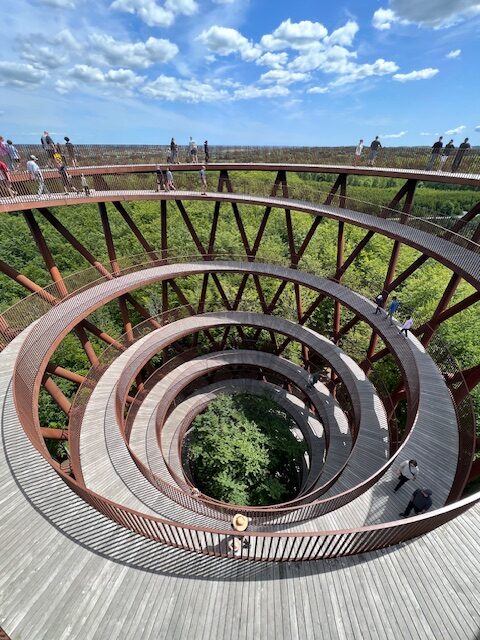
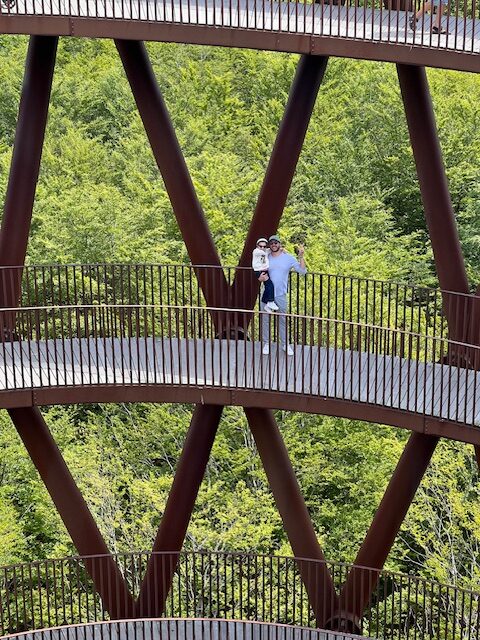

If you happen to have time when you venture this way, you might consider spending the night. We got to walk through the luxury yurts on the property, and they are extremely cool. The décor is impressive, and they look out onto a lake, where deer come and hang out. There’s also a sauna overlooking the lake that’s reserved for overnight glampers and an honor bar to grab beer, liquor, or wine. I’m sure it’s quite romantic and mind-clearing to have a stay here (an adult stay).
After roaming through Camp Adventure, we continued our drive south to Knuthenborg, a drive-through safari park on the island of Lolland. I know, in the US, our drive-through parks are pretty sad. Even the good ones are depressing. This one is far superior. It’s extremely clean, like all of Denmark, and I’m sure animals all over Europe are vying for a spot to retire here. For humans, it’s also different because you can rent a cabin, spend the night on the “Savanna,” and wake up to animals at your doorstep.
We chose to stay in the part of the park where giraffes greet you in the morning, and we had a huge, well-appointed glamping accommodation. I was a bit concerned about how rustic the experience would be. I’m many things, but rustic is not one of them. I was also worried about meals out there. You have to check in by 5PM, and you can’t leave your room after 7PM. You cook your own food in your cabin. You stay there. I literally live my life in a wonderful haze of meal planning. A few minutes after one meal, I’m pondering the next. How would that pan out on the “Savanna”?

So, here’s how it works. You buy meal kits from the hotel to cook, or you bring your own food – or some combo of the two, which is what we did. We stopped at a grocery store, called the Marco, in Copenhagen. We really only stopped because our longtime friend and assistant is named Marco, and we had to support his namesake. And true to Marco’s style, the stop gave us the chance to buy a nice bottle of wine, fresh bread, prosciutto, and truffle potato chips. Those amped up the meat and veggie packs we cooked on the electric grill at the cabin.
Okay, so once the food was taken care of, I could really appreciate the surroundings and the experience. The cabin itself was lovely, but it definitely was in the elements. There was limited electric lighting, no heater or a/c, and fabric walls that did little to keep out the chill. Although there was a room full of bunk beds, Jamil, Josephine, and I shared one big bed, putting the space heater on full blast and wrapping ourselves in blankets. But the cabin had a very nice bathroom, kitchen, and living area, and even spoiled ol’ me could acknowledge that it was a great experience, especially when the giraffes emerged in the morning and ate their breakfast right off our porch.


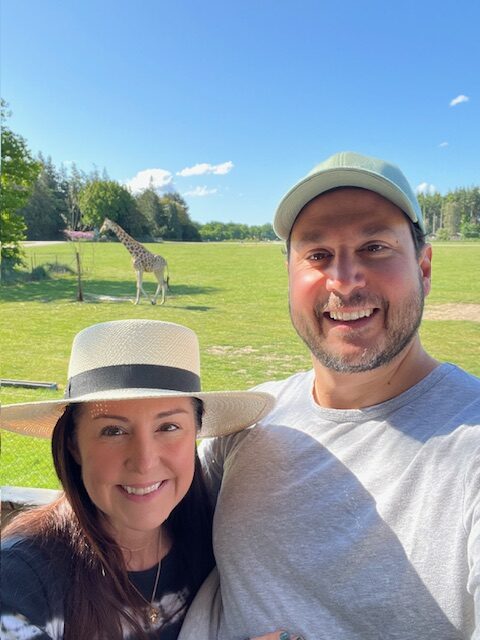
If Jamil and I had been alone, we would have skipped the safari park, off to do something more culturally enlightening, I guess. I’m so glad we have Josephine to remind us to just have fun for fun’s sake. She needed this little break from history and architecture and sophistication. She loved cooking her own meal on vacation and sleeping in a tent for the first time (okay, it’s a tent to me). It’s something we could have done in the US, but I would have been reluctant to allocate the time. In fact, as we go forward with a little girl who’s very aware of our adventures and of the activities on our agenda, I am attempting to take her preferences and entertainment into account more than I did when she was a tiny tagalong. After all, I’m trying to raise an avid traveler. I don’t think that’s possible if all we do are museums and Michelin-rated restaurants.




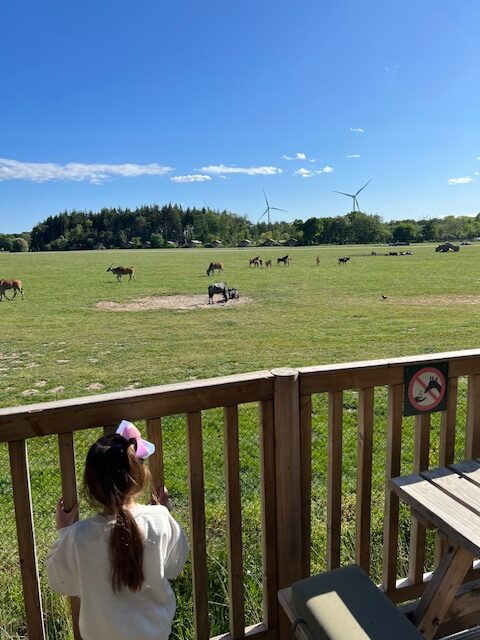




Author: Jessica Givens
Our Viking Ship Museum Voyage
If you know me, you know I’m a sucker for ancient history. I typically seek out Greek and Roman sites, but when in Scandinavia, you have to embrace the majesty of the Vikings. And so we did.
On our second morning in Copenhagen, I walked a couple of miles and rented a car, a Volkswagen Touran, to scope out some of the city’s surroundings. It’s only a 90-minute drive to the Viking Ship Museum in Roskilde, and I felt like we had to go. We’ve visited the Viking Museum in Oslo, where the best-preserved ships are located, but the Viking Ship Museum in Roskilde has recreated Viking ships that you can ride on. That was too cool to pass up.
You have to get to Roskilde early if you want to land space on that day’s ride. I am NOT an early bird, by any stretch, but I really didn’t want my lack of punctuality to ruin this opportunity. And so, we were there when the museum opened at 10AM to buy tickets for the 1PM voyage. Wow. That was a long time to wait, and I had a plan for how to use the interim stretch.

Not too far from Roskilde is Frederiksborg Castle (about 40 mins), one of the most beautiful, most massive castles we’ve ever seen. Despite the fact that a fire ravaged some parts of the building in 1859, much of the castle is exceedingly well preserved.
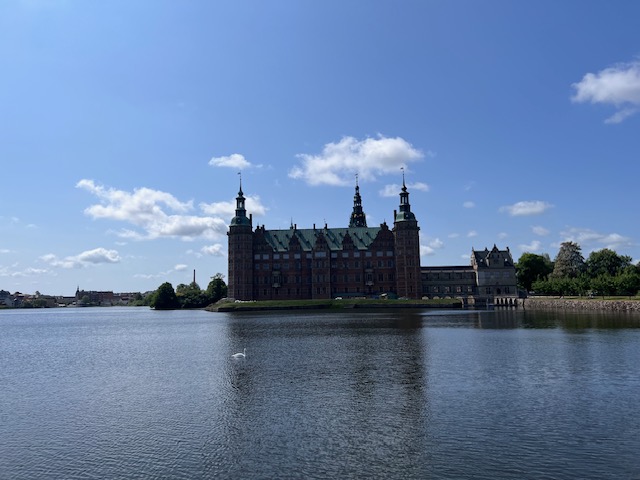

The chapel, which dates from 1606, is alone worth the drive. Furthermore, the castle houses the Danish Museum of National History, which includes a vast collection of paintings and furniture.

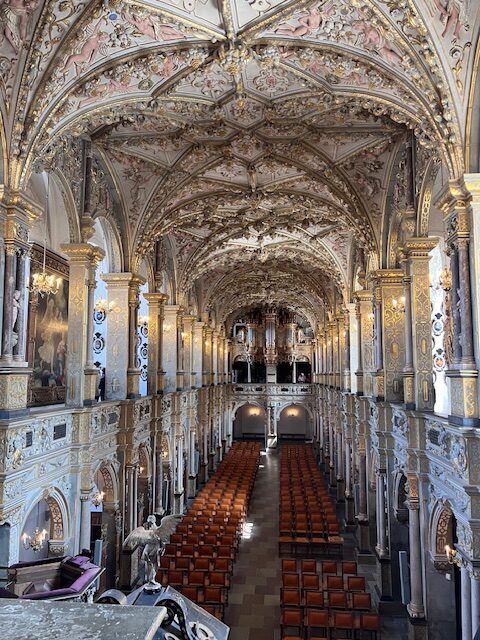
It wasn’t just cool for us: they’ve made a fun kids’ activity sheet that kept Josephine fully occupied. She searched high and low for the items she was instructed to find, which made her look deeply at the art, the furniture, the floors, etc.
The grounds of the castle were also spectacular, with labyrinthine hedges and remarkable flower gardens. People were taking boat rides in the moat around the castle — in fact, it was sort of like a ferry to get from the center of the nearby town to the castle grounds. It was incredible. It was also the perfect way to fill those hours between purchasing tickets and boarding a Viking ship.

The Viking Ship Ride
Okay, so we didn’t know what to expect at the Viking ship experience. After donning some safety gear, we trekked out with the herd of museumgoers who’d snagged boat tickets that day and made our way to a giant wooden craft. We sat on wooden planks in rowing formation, and we hefted enormously long oars into line with those in front of and behind us. As a team, we rowed the boat out into the bay. Quite a challenge, given the synchronicity required to make the boat move. If you’re off by a millisecond, it throws off the rhythm. I can imagine that the Vikings moved in lockstep with one another, like a machine.
As we got about 200 yards from shore, the crew unfurled the sail, which billowed and filled with air, and the boat rapidly gained speed. I could see how a well-trained crew of brawny Vikings managed to zip through the North Sea, and how they could have easily reached North America. These guys had boating technology down. Even our pathetic group managed to make the boat move. Josephine loved the ride. She may have loved looking down at the millions of jellyfish in the water beneath the oars more than she loved the ride itself, but who wouldn’t?
BUT THAT’S NOT ALL!
I read online that there was a deer park right outside Copenhagen, called Jaegersborg Dyrehaven. That basically means Deer Haven in Danish, which makes sense because this is a sanctuary for deer. There are THOUSANDS of them roaming the property. And Josephine was fascinated by the opportunity to see them. We made sure our drive back would pass by Dyrehaven, and we walked into the park to find a herd or two. The park had many activities, and I could see that people who plan for it could spend an entire day here. We were there towards the end of the day, though, so we only stayed for about an hour. But it was a nice injection of nature and wildlife into our day, and it was definitely worth a stop.
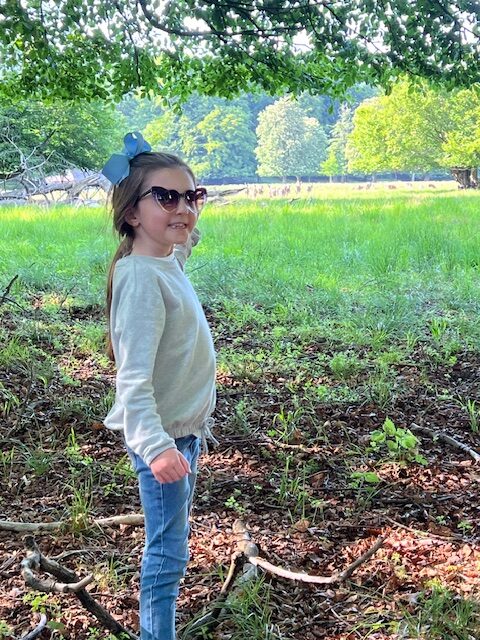

What a PERFECT day. The combination of the castle, museum, and forest was ideal. There was never a dull moment. AND we got to have lunch at the Viking Museum’s restaurant, where they serve Viking meals, like cured fish and dark bread on a big wooden board. That was super fun.
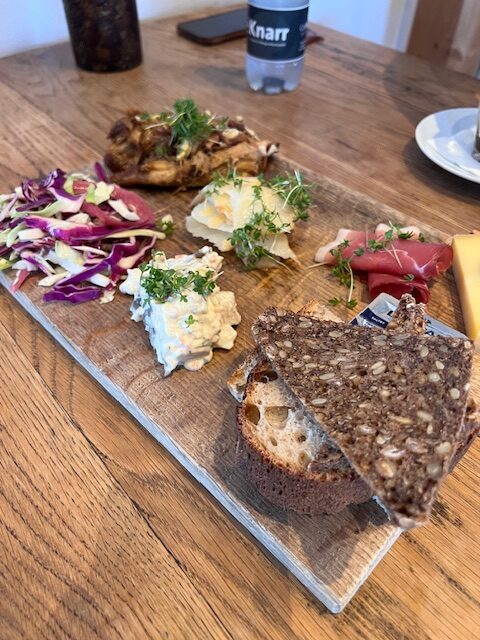
Moreover, we were back in the city by 5pm, with plenty of time to shower and get ready for dinner. A total must-recreate day for any family with kids traveling through Denmark.
Author: Jessica Givens
Tingling Taste Buds in Singapore
Eating in Singapore
I think I’ve mentioned this before, but ever since we had Josephine, we’ve opened our minds to the idea of eating in our hotel at least once per stay (not including breakfast). It makes life so much easier to bathe her and head downstairs than to worry about getting transportation and carting her home after a late meal. Thankfully, that transition in our lives coincided with a serious across-the-board improvement of hotel restaurants. And Singapore was no exception.
Because of the unexpected change in travel plans when my dad injured himself, we lengthened our stay in Singapore from three days to five. However, we couldn’t stay at the Raffles all five nights, due to availability issues. Instead, we had to start out at the Ritz-Carlton for two nights and then move to the Raffles for three nights. Why move, you say? The Raffles is iconic and magical. It’s a destination unto itself. I wasn’t going to miss it. So, we wound up eating at both the Ritz and the Raffles, as well as a couple of places on the town. Here’s the rundown:
1. Summer Pavilion at the Ritz-Carlton
The Chinese restaurant at the Ritz-Carlton has a Michelin star, which it has retained for 6 years. I felt a little odd getting Chinese food in Singapore, thinking I should be eating Singaporean food, until I realized that Singapore is truly a fusion of cultures. Chinese food is Singaporean.
The menu at Summer Pavilion has a zillion things that Jamil and I aren’t interested in trying, like “Bird’s Nest” anything. I just can’t get into eating it. But they also have plenty of things we can get excited about.
We started with the Peking Duck. I’m beating myself up for not taking a photo of it. Who knew the waitress was going to go carve that little dude and bring him back wrapped in pancakes? It was phenomenal. And I love that they serve what they consider to be the less desirable part, the meat itself, as sort of an on-the-side afterthought. What a delicious afterthought! We also got the Roasted Crispy Chicken, which I mention here because it was so good it could have been overlooked because it is relegated to the short appetizer page. I don’t want to bore you with descriptions of our other selections, including my first abalone (!), but I want you to know it was all phenomenal.
For years, I’ve heard that Chinese food is better in the United States than in Asia, but the meals I had in Singapore (which, granted, isn’t China) made me question how the people who hold that view define Chinese food. Perhaps they’re firmly committed to Lemon Chicken or General Tso’s? Maybe they are looking for a Chinese version of P.F. Chang’s? I probably won’t solve that mystery today, but I can say that Chinese food is better in Singapore than in the U.S.



2. Jumbo Seafood Signature
Everyone told me that I had to try the Singapore Chili Crab, so I dutifully made a reservation at a well known seafood restaurant in the Marina Bay Sands. There were places that had better reviews, but they were all booked, and this restaurant was quite popular. The Signature restaurant is the top-of-the-line iteration of the Jumbo Seafood brand. It’s a white tablecloth affair, and the prices are quite high – quite high. I might have opted out, but we went the first night we arrived, when we were too tired to quibble.
In hindsight, I’m not sure what all we ordered. I know that the wine selection was decent. I know that the chili crab and the pepper crab were flavorful. I also recall that there were some tasty noodles for Josephine. But nothing was super memorable.
Looking back, I wish I’d spoken to a taxi driver or two before going to eat chili crab. I learned from one great driver that the Maxwell food hall is renowned for its chili crab offerings, and the vendors there are regulated by the government. They can only charge certain amounts for their crab, and they have to adhere to a certain quality; otherwise, their right to operate in the Maxwell center may be revoked. After eating in a food hall, I feel confident that the better chili crab would have been at Maxwell, not at the uber ritzy Jumbo Signature, but what can you do? I guess learn from my mistake!
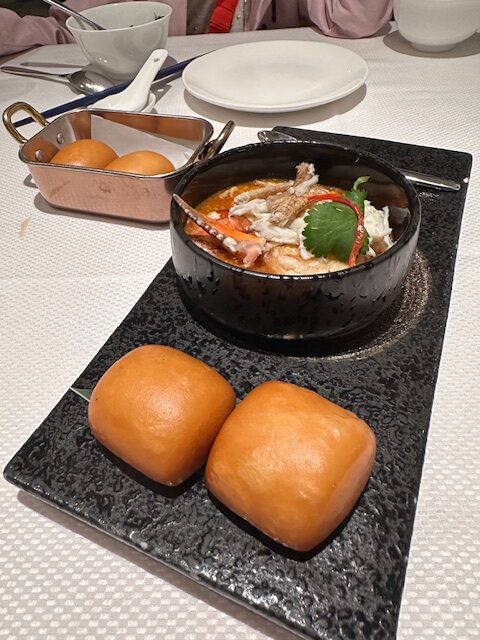
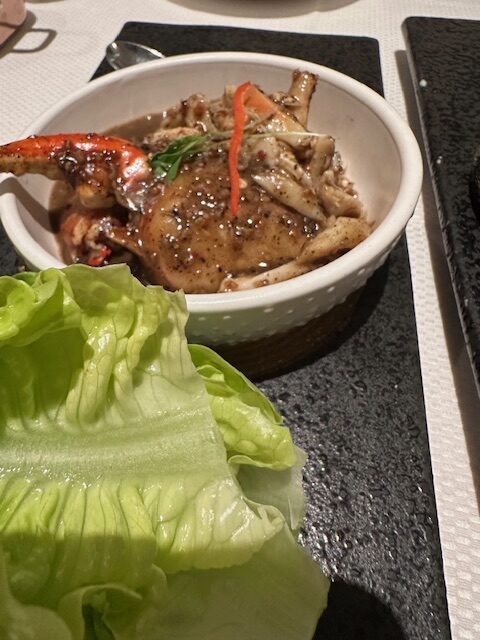
3. Din Tai Fung
This place is a classic! We’ve been there once before, that time in Glendale, CA. However, I think the food was way better in Singapore. And I don’t think that’s attributable to the romance of Singapore itself, I think it’s because the audience in Singapore is critical. Very, very critical.
The restaurant is famous for its soup dumplings, called Xiao Long Bao. Rumor has it that the Xiao Long Bao chefs at Din Tai Fung train for a full year before being let loose in the kitchen!
While the Xiao Long Bao are quite good, the other dumplings on the menu might even be better. We had delicious little pork dumplings in vinegar and chili and a wonton noodle soup. We also had one other variety that I can’t locate on any menu for some reason! I thought those three types easily rivaled the soup dumplings. Other dishes were equally tasty and super fresh. The spinach was so crisp and green, no overcooking here! The various steamed buns were excellent, too. Truly, it was one great dish after another.
Be prepared for a wait at Din Tai Fung. It’s extremely popular with locals and tourists. But while you wait, I recommend you head over to Bacha and get a pot of coffee. That’s a treat in its own right.


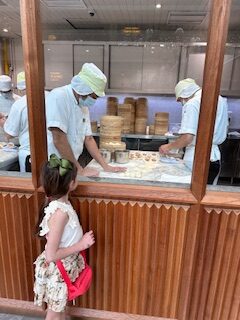
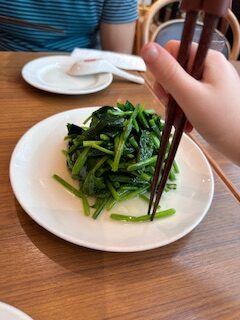

4. Lau Pau Sat
If you ask anyone in Singapore about a local food hall, they’ll likely recommend Lau Pa Sat before any other. Housed in a building from the late 1800s, Lau Pa Sat is emblematic of Singaporean culture. Unlike most other food halls we’ve visited, there’s no questioning the cleanliness or the quality at Lau Pa Sat. Government officials patrol the hawkers to ensure the highest standards of hygiene, rating them regularly. Too many demerits, and they lose their stall in Lau Pa Sat. Given the popularity of the joint, I’d say that’s a punishment no food purveyor would willingly endure.
You can find a startling array of culinary options at Lau Pa Sat, but the only ones I can speak to are the satay, found on Satay Street, which billows with smoke from rows of grills right outside the food hall, and the Hainanese chicken and rice.
The satay appears intimidating at first – there are so many people cooking exactly the same thing on exactly the same equipment in exactly the same lineup. How could you possibly decide which hawker to order from?! Turns out, you don’t have to make that choice. There’s a stall at the very end that takes all the satay orders, making sure all the hawkers have business and that all the prices are consistent. So, don’t stress. Find that dude, pay him about $40, and get a huge set of satay skewers to share with your crew.
With respect to the Hainanese chicken and rice, there were two places I saw that had it for sale. I just chose the place with the longer line. You can order the chicken roasted or boiled, or you can get a combination. I went with the combo because I wasn’t sure what to expect. Both were fantastic, and the deeply flavorful rice was habit-forming. I am still thinking about that dish, and I’m going to try to recreate it at home. But, honestly, nothing can ever top what I got in that food hall for about $5.
Finally, on a totally different, merely practical note, be aware that there are NO napkins at Lau Pa Sat. You’re expected to bring your own. If you should forget to bring napkins (as we did), there are sinks right outside to wash your hands.
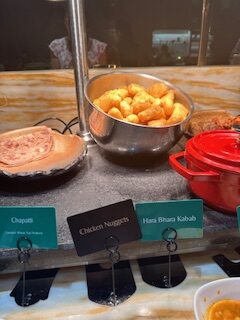





5. Tiffin Room at the Raffles
Singapore has experienced a huge Indian influence. Note the fact that there’s a Little India in Singapore, rather than a Little Italy.
So, when Josephine looked a little exhausted after a day of endless walking, we decided to have dinner downstairs at Tiffin Room, whose Indian food possesses an excellent reputation.
It was undoubtedly the best Indian dinner I’ve ever had! Even if you don’t stay at the Raffles, you should come to Tiffin Room for dinner, and don’t under-order on the bread front. We got regular naan, garlic naan, and onion kulcha. That may sound like a lot – and actually, it was a lot – but it was so good that I’ll never apologize for the indulgence.
And, everything else on the menu deserves the same level of enthusiasm. You should go!



6. Mott 32
Mott 32 is another Michelin-starred restaurant in Singapore. It has multiple locations around the country, and I kind of wondered if it could live up to the hype. I’m glad I let that go because it exceeded all expectations!
The restaurant prides itself on its Peking duck, which it had sold out of when we arrived.
But, that didn’t faze us. We really only darkened the door of Mott 32 because of the persistent rain and because of my many promises to Josephine of a dumpling-laden vacation. Mott 32 has a dim sum menu with several dumpling options, so it checked that box, and it’s right inside the Marina Bay Sands, so it was super convenient.
Jamil felt like the Chinese food there exceeded the quality of what we found at Summer Pavilion, but I think they’re just different. Summer Pavilion adheres to traditional Chinese recipes, while Mott 32 fuses truffles with shumai and avocados with rolled rice pancakes. It’s bolder. It’s newer. It’s also “vibier” because of the amazing cocktails and the hip décor.
If there were a Mott 32 in Houston, it would be a shimmering hit. Look how well Benny Chow’s has done, despite its many negative reviews! Houston desperately needs a place like this. Not a Yauatcha, isolated in the Galleria and destined to be forgotten by Houstonians themselves, but a great Chinese spot, plopped right in the heart of River Oaks or Montrose. Alas, none appears to be in the works, so you’ll have to fly to Singapore and try Mott 32 instead.



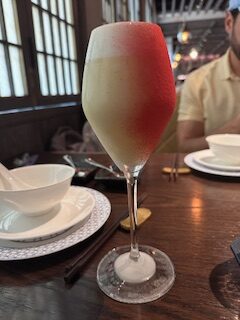
Other miscellaneous photos from the trip:





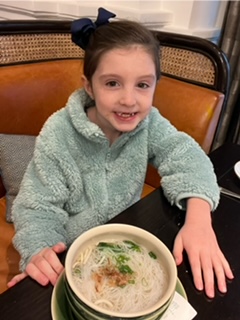

Author: Jessica Givens
Quick Tips for Planning a Trip Like Ours
I almost spent about four times as much on this trip because I was going to use the same service that planned our trip to Egypt. There is great value in having a full-scale travel agency plan your trip, but for us, price is an object. We travel quite a lot and for long periods of time. We can’t afford to use a comprehensive guide for everything we do. Besides, I don’t feel like every destination requires their assistance, and I could get a little annoyed with having to hang out with some dude I don’t know for days on end.
I know many people might think that a trip to Singapore, Cambodia, Vietnam, and Taiwan would require a travel agency to coordinate it, just because those countries are so different from the US. However, cultural and historical elements aren’t super-intriguing to me, or as storied as some others, like Egypt. Additionally, they’re not as confusing or vast to navigate. We would definitely need a travel agent to plan a vacation to India, for example. But I didn’t feel like this was a trip with great depth. It was a see-the-highlights adventure. We’d need guides periodically but not every single day, and we wouldn’t need a car to follow us everywhere. I could handle it.
Here’s what I recommend doing:
1. Use your hotel concierge to find guides.
Good hotels are tied in with the tourism industry, and they can connect you with a good local tour company to show you the sights. Sometimes, you can find the concierge’s email address on the hotel website. Other times, you’ll need to email the reservation department to get that contact info. I admit that sometimes, I use TripAdvisor or Google to find our guides, but if I want to make things easy on myself, I let the concierge handle it. That’s what I did for our tours on this trip, and it worked out very well, even with something as complicated as our Angkor Wat tour, where we had to be picked up and dropped off, plus go on the tour, all in the span of about four hours.
2. Use Blacklane for cars to and from the airport.
Blacklane is an amazing app that connects travelers with companies that provide transportation in big, nice cars. You could use a ridesharing app, but the Blacklane drivers come in and hold a sign for you as you exit baggage claim. They help with the luggage, and they just provide better service. The price isn’t much different from Uber, either. In fact, I think it’s a little cheaper sometimes.
3. Find out what the ridesharing apps are for the countries you’re visiting.
We learned that Uber has no presence in Singapore, Vietnam, or Cambodia. They’re all on the Grab app. And Grab is really good. We could use it to get cars in Singapore, tuk-tuks in Cambodia, and even motorcycles in Vietnam.
4. Don’t trust TripAdvisor for restaurant recommendations.
I don’t know what’s happened to TripAdvisor. It once was a community of dedicated, serious travelers who wanted to share their experiences Now, it’s more of a haphazard, pop-in review site. The only time I take the reviews seriously are for private tour guides. Those have consistently worked out well for us.
5. Use Google Maps to get an idea of the good restaurants/shops in the area.
I find that locals and real travelers write reviews on Google. I’m sure some are planted, but if a restaurant has 1,000 reviews that are mostly positive, that’s promising. We generally just pull up Google Maps for wherever we’re standing, and we see what’s around us. We did that for massages, coffee shops, pho stands, etc. It’s been very reliable.
6. Factor in some kid activities!
Josephine counts on having more to do than just scamp around a city or sit in a hotel room. She wants to play. In Cambodia, that was tough. We wound up going to the gym and doing a HIIT workout together. She thought that was fun. But you usually can find exhibits or activities for kids in each place you visit. For example, in Singapore, they had an immersive Disney movie experience. That wound up being a bust for us because the show got canceled at the last minute due to technical difficulties, but it sounded fun to Josephine. In Spain, there are giant playgrounds where she can run around like a loon. In Italy, she can play carnival games in the Piazza Navona. Those little fun-for-fun’s-sake activities make a huge difference in her demeanor.
7. Bring a stroller for as long as you can!
We know we’re aging out of the stroller. We think we can make it another 2 years… maybe? The stroller is so clutch for holding water and coats and purchases – and Josephine when she gets tired. We just check it through to our final destination and get it with the luggage. We store it most of the trip in the hotel luggage area, but we pull it out when we’re going to be spending a lot of time on our feet, which Jamil and I love to do because we get to see more of the city. It’s really not a hassle. It’s so helpful!
8. Packing suggestions for your family:
- Stock your medicine bag; see your pediatrician, if you need to.
We always pack basic meds, like Dimetapp, Children’s Benadryl, Motrin, Tylenol, etc. I also like to pack Prevacid, in case I get heartburn, Advil Cold & Sinus, NyQuil, and the adult versions of Motrin and Tylenol. On this trip, we happened to see the pediatrician because Josephine was feeling a little under the weather. She suggested that we include cortisone cream, antibiotic band-aids, and two prescription meds, Azithromycin and Zofran, to the bag. Azithromycin is a strong antibiotic that takes care of everything from sinus infections to E. Coli. Zofran quells nausea. We only got those meds for Josephine, and she didn’t wind up needing those two, but she did need the cortisone cream because she got a pretty nasty mosquito bite on her eyebrow. On the contrary, Jamil would have benefited from some adult versions of those meds because he got E. Coli in Cambodia and wound up having to see a doctor in Vietnam to get antibiotics.
- Bring mosquito repellant
Like it or not, dengue fever and chikungunya are active ailments in many Asian countries. When you go to the zoo in Singapore, Angkor Wat in Cambodia, or the Mekong Delta in Vietnam, wear some DEET. I was terrified when Josephine got that bug bite on her eyebrow. Dengue fever is usually survivable, but it’s miserable. Definitely would have put a stiff end to our trip.
- Order helper chopsticks, like the ones seen here: https://everythingchopsticks.com/Panda-Childrens-Helper-Chopsticks.html
Whether your kids are enthusiastic about chopsticks or not, there are some places where you just don’t feel comfortable asking for a fork, so you need a solution. I ordered the helper chopsticks in advance for Josephine and let her practice on them. There are a variety of versions, some with finger placement grips, but Josephine preferred this simplified set. We had her use them at home for a few days, picking things up and eating easy things, like pieces of steak (not slippery). At first, she used the full set because the chopsticks are short and easier to manipulate, but then she started to put the silicon connector on the chopsticks at restaurants. In the end, she got to be such a pro that she removed the silicon altogether and just used the adult chopsticks!
- Bring water-resistant (or waterproof) shoes
It just so happened that I gave Josephine Doc Marten’s for Christmas, and we threw them in the bag because they were cute and fun. She needed them multiple times in Singapore because we were at the end of the monsoon season, and she wore them after rain showers in Taipei. Doc Marten’s are also so cute that they can wear them when they dress up or down, so I think I’ll always include a pair on our travels from here on out. There’s no drawback to having them. Wet feet are so lame.
Author: Jessica Givens
Newest Abrasion: American Express Did What?!
When my dad fell and injured himself on our Thanksgiving trip, we had to make abrupt changes to our Christmas vacation plans. Originally, we were scheduled to leave for Asia on December 17 and return on January 7, spending 12 days in Vietnam, several nights in Singapore, and several more in Taipei. Our new trip would begin on December 25, departing at 11:30PM after Christmas revelry, and would conclude on January 10.
I had booked our tickets through American Express Platinum, something I never do, because I thought it would provide me with some additional security for this rather large voyage. When I went to change the tickets, I couldn’t complete the transaction online. I had to call Amex and wait an eternity to get a representative to make the changes. I was irritated at some of the terms of the ticket. First, even though my new tickets were substantially less expensive, I would get no credit with the airline. Second, they wanted to charge me an additional $1300 for the privilege of changing the ticket. However, I was in no position to bargain, so although I balked, I agreed to the terms.
After that call, I logged into my Amex travel account to verify that I’d done everything on my end to change my tickets. On the home page, it still said the original travel dates, but when I clicked on the link to see my reservation, the new dates appeared. Everything looked zen. I rebooked all of our hotels, tours, and connecting flights, and then turned my attention to my father, who needed to have his quadriceps tendon reattached.
Around midnight on December 17, I realized I hadn’t yet booked a car to take us from the airport to our hotel in Singapore, where we’d spend the first few nights of our trip. I went onto the Blacklane app, which I always use for quality transportation to and from airports abroad, and it asked for my flight number. On Gmail, I searched “Singapore” to retrieve my reservation info, and the first message that popped up was from American Express. It had come in at 2:45AM (call it the night of December 16 or the wee hours of December 17). The subject read, “Your booking has been canceled.” What, what? My heart started pounding, and I said, “Oh, my God, Jamil, Amex canceled our flight to Singapore!”
I spent the next three hours on the phone with American Express, trying to rectify the mishap.
The representatives explained that the person I authorized to make the changes never processed the change fee on the card, which I didn’t notice because of all the other chaos going on in my life. Consequently, although American Express had changed our flights on my home page, the new tickets had never been issued. The representatives apologized and accepted responsibility, but they also explained that our flight plan was no longer available. We could get to Taipei, where we’d planned to lay over, but the flight to Singapore was completely full. Moreover, every flight American Express had access to book between Taipei and Singapore was sold out between December 25 and January 2!!
Immediately, I started searching on Kayak for flights. There was literally ONE flight left. It was on a new Taiwanese luxury carrier, called Starlux, and they only had first class, not business. It was $9300 for three tickets to make the one-way trip between Taipei and Singapore. I was still on the phone with Amex, and I told them I’d found a flight that worked, but that they’d need to reimburse me for that massive charge. And while they couldn’t promise I’d get a refund for the purchase, they said they’d file a case right then on my behalf, and they felt it would likely be resolved in my favor. Nervously, I confirmed the payment and prayed for the best.
I have to say that the flight between Taipei and Singapore – that unexpected first-class experience – was incredible. Starlux Airlines is quite a carrier. We had gorgeous, huge seats, and Josephine and I were able to enclose our seats in a private, two-person suite. We had massive televisions with all kinds of movies and great Wi-Fi. We had amazing service and wonderful food. Not only that, but because we were in first class, Starlux sent representatives to usher us through immigration and ensured that our bags made it safely from EVA Airways (the airline we took from Houston to Taipei) onto the Starlux flight. They even showed us pictures to reassure us that all was well with our bags and drove us on little carts through the airport. We felt like rockstar VIPs.
And, all’s well that ends well! I received a message from American Express the day after we arrived in Singapore, saying that they’d issued a credit to the account! Still, American Express probably added about 9,000 gray hairs to my head that night.
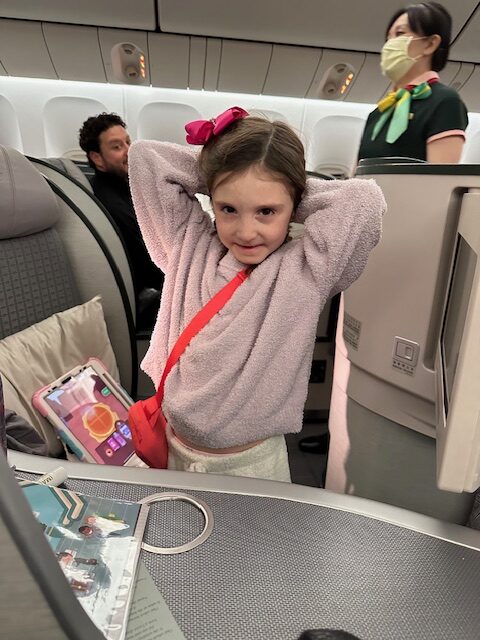




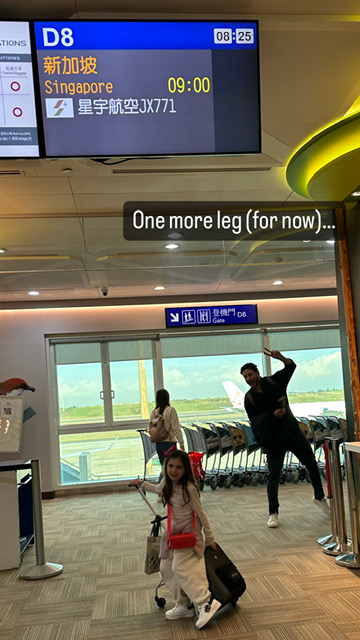





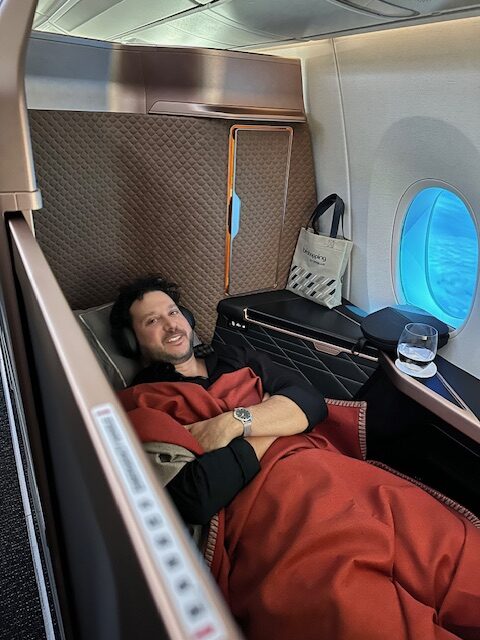

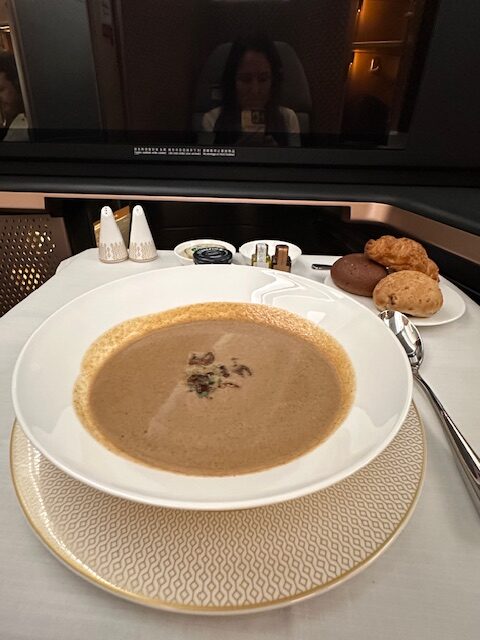
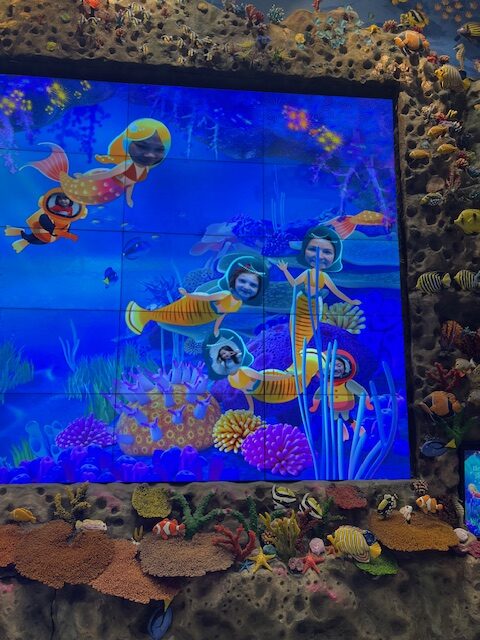


Author: Jessica Givens
Copyright 2022 , All-in-One Academics
info@allinoneacademics.com

